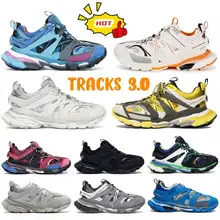What is a Sailboat?
A sailboat is a type of watercraft that is propelled partly or entirely by sails, harnessing the power of the wind. This environmentally friendly mode of transportation has been used for thousands of years, evolving from simple rafts to the complex and high-performance boats we see today. Sailboats come in various shapes and sizes, tailored to the needs of different sailors—from the casual hobbyist to the competitive racer. The basic principles on how sailboats work involve balancing the forces generated by the wind against the resistance provided by the water.
Sailboats are designed for individuals who have a passion for adventure and enjoy the challenge of controlling a vessel using natural elements. They cater to a wide audience, including recreational sailors, competitive racing teams, and businesses that offer charter services or sailing lessons. The mastery of sailing requires understanding how to adjust sails, navigate using wind patterns, and manage the boat's stability, known as trimming.
The operation of a sailboat is based on aerodynamics and hydrodynamics. The sails act as airfoils that convert wind energy into propulsion, similar to how airplane wings generate lift. By setting the sails at an appropriate angle relative to the wind, a sailor can control the direction and speed of the boat. The hull design also plays a crucial role; it must be streamlined to move through water efficiently while providing enough buoyancy to support the boat's weight and withstand rough conditions.
Types of Sailboat
Sailboats are classified based on various factors such as hull design, keel type, size, and rigging layout. Here are some common types you'll find:
- Dinghy: These are small sailboats that typically accommodate one or two people. They are often used for learning how to sail due to their simple rigging and ease of handling.
- Catamaran: Recognizable by their two parallel hulls, catamarans offer greater stability and space than monohull sailboats. They are popular for both racing and leisure cruising.
- Sloop: A sloop has one mast and two sails—a mainsail and a headsail. This configuration is one of the most common for modern sailboats used in both racing and cruising.
- Schooner: Schooners carry two or more masts with sails set fore-and-aft. They have historical significance and are often associated with traditional sailing.
- Ketch: Ketches feature two masts with the aft mast (the mizzen) shorter than the main mast. They provide good balance and additional sail options for long-distance cruising.
- Yawl: Similar to ketches but with a smaller mizzenmast positioned closer to the stern, yawls offer improved handling and additional sail combinations.
How to Choose Sailboat
Selecting a sailboat for business purposes involves several considerations to ensure that it meets your operational requirements and financial objectives. Here's an overview of what businesses should keep in mind:
- Intended Use: Determine whether the sailboat will be used for instructional purposes, charters, personal leisure, or competitive racing. Each application might require different features such as robustness, cabin space, or advanced rigging systems.
- Size and Capacity: The size dictates not only the number of passengers that can be accommodated but also impacts handling characteristics and maintenance requirements.
- Hull Material: Common materials include fiberglass, wood, plastic, and metal alloys like aluminum. Each material offers different benefits in terms of durability, maintenance, performance, and cost.
- Sail Plan: Consider if a simpler rigging system would suffice or if more complex sails are needed for performance sailing. This impacts ease of use as well as speed capabilities.
- Design Type: Keeping in mind stability preferences and storage considerations, decide between monohulls versus multihulls such as catamarans or trimarans.
Best Sailboat on Alibaba.com
For businesses seeking quality sailboats that cater to a variety of needs—from commercial use to resale—Alibaba.com stands out as a premier marketplace. Offering access to an extensive range of sailing vessels from suppliers around the world, Alibaba.com facilitates finding the right boat that aligns with your business model. The platform emphasizes connecting buyers with reputable suppliers who can provide tailored solutions whether you're looking for performance racing boats or leisure cruisers suitable for client charters.
Through Alibaba.com's Trade Assurance service, businesses can transact with confidence knowing their payments are protected until delivery is confirmed. Furthermore, Alibaba's global reach means that no matter where your business is located, you have access to an international selection of sailboats that might not otherwise be available in your local market.
The convenience offered by Alibaba.com extends beyond just product variety; features such as mobile accessibility and multilingual communication tools ensure that regardless of your location or native language, you can efficiently manage your purchases. As an established name in online B2B sales since 1999, Alibaba.com continues its mission to serve small and medium-sized businesses globally by simplifying international trade processes.
Common FAQs for Sailboat
What types of sailboats are best for sailing schools?
Sailing schools typically benefit from using dinghies and small keelboats, as they are easier to handle and ideal for teaching the fundamentals of sailing to beginners.
How do businesses determine the appropriate size of a sailboat for their operations?
Businesses should evaluate the intended use, such as charters or lessons, the number of clients they plan to serve at one time, and the level of comfort and amenities they wish to provide.
What are the maintenance considerations for a commercial sailboat?
Commercial sailboats require regular maintenance, including hull cleaning, sail repairs, rigging checks, and engine servicing if applicable, to ensure safety and longevity.
How can a business decide between purchasing a monohull or a multihull sailboat?
The decision should be based on factors like desired stability, space requirements, performance expectations, and the typical water conditions where the sailboat will be used.
What are the advantages of choosing a catamaran for commercial use?
Catamarans offer more space, stability, and comfort compared to monohulls, making them an attractive option for charter businesses that prioritize guest experience.
How does hull material affect the performance and cost of a sailboat?
Hull material choice impacts the boat's durability, weight, maintenance needs, and overall cost. Lightweight materials like fiberglass improve speed but may require more upkeep.
What should businesses consider when selecting sails for their sailboats?
Businesses should consider the type of sailing they intend to do—recreational versus competitive—and whether they need sails that prioritize ease of handling or performance.
Is it important for a business to have a sailboat with auxiliary power?
Auxiliary power can be crucial for safety and maneuverability in harbors or when wind conditions are poor; thus, it's an important consideration for commercial operators.
What types of certifications are required for operating a commercial sailboat?
Certifications vary by region but typically include safety training, first aid qualifications, and specific sailing licenses or endorsements relevant to the size and type of vessel.
How do businesses ensure compliance with maritime regulations when operating sailboats?
Businesses must familiarize themselves with local maritime laws, ensure their vessels are registered and inspected as required, and maintain proper safety equipment on board.
What factors influence the resale value of a commercial sailboat?
Resale value is influenced by brand reputation, condition and age of the vessel, market demand, included equipment and features, and maintenance history.










































 浙公网安备 33010002000092号
浙公网安备 33010002000092号 浙B2-20120091-4
浙B2-20120091-4